Side, Turkey - My Impressions of a Living History

I’ve mentioned our Side trip before and this time I want to share some ideas on how you can make your beach holiday in Side even more exciting. While we were relaxing there, we decided to visit the Ancient City of Side. It is known as one of the most important gems of Turkey’s ancient heritage. We explored its main attractions and in this post, I’ll share my personal impressions about whether it’s worth visiting.

Side is located on Turkey’s southwestern Mediterranean coast, just seventy kilometers from Antalya. We arrived from Alanya, about seventy-five kilometers away, which means Side sits more or less between the two towns. Along the shoreline, hotels stretch endlessly beside each other. To be honest the modern part of the city didn’t seem that attractive to me. Only seven kilometers away lies Manavgat, a larger and rather charming town. However, that day our focus was entirely on the small peninsula where the old city is located.

To give you a brief background, Side is among the oldest Greek colonies in Anatolia. Its name first appeared in the seventh century bc. In the local language "side" means pomegranate, a symbol of abundance in this region. Despite falling under different rulers throughout history, the city usually enjoyed a degree of autonomy. By the second century bc, Side had grown into one of the wealthiest cities of the Mediterranean thanks to its strategic position and thriving trade.
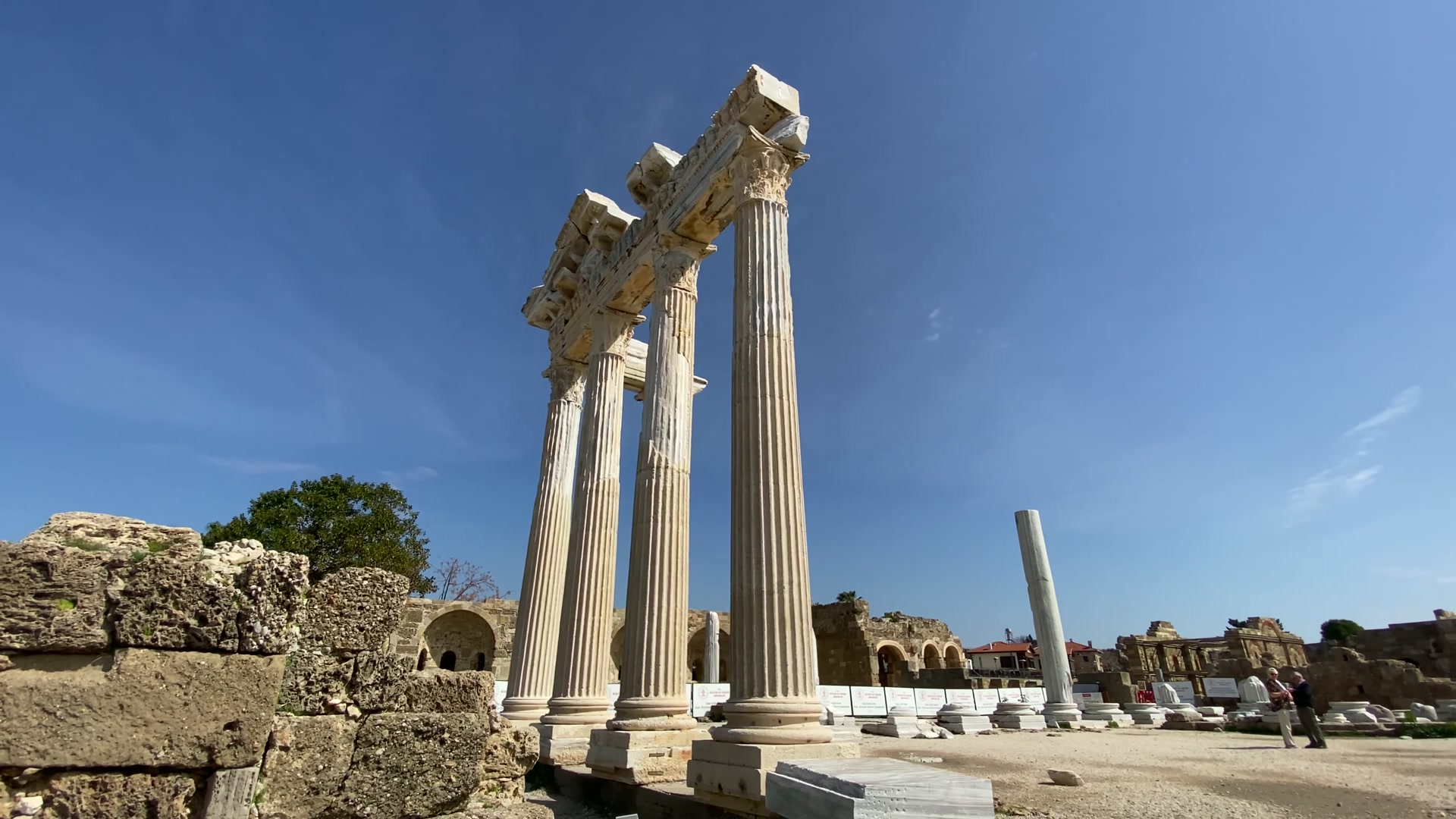
Sadly not much has survived from its golden age. Early in the first century bc, pirates took over the city. The locals had no choice but to hand over their harbor and markets. Side then became a dark hub of pirate trade. Things changed with the rise of the Roman Empire. In the second and third centuries ad, the city flourished again. Almost all the monuments and sculptures we see today date from this prosperous Roman period. However, after the empire collapsed, Side slowly faded in significance. It became a target for Arab pirates in the seventh century, was devastated in the eleventh and remained abandoned until the late nineteenth century.

I found out that archaeological excavations are still very active in Side. The site feels full of potential, with workers busy digging in nearly every corner.

So, what can you actually do in Side? We entered the old city without paying an entrance fee and followed a colonnaded street. Even though only the column bases are left, I still found the scale of the street quite impressive. In fact, there are three colonnaded streets like this in Side.
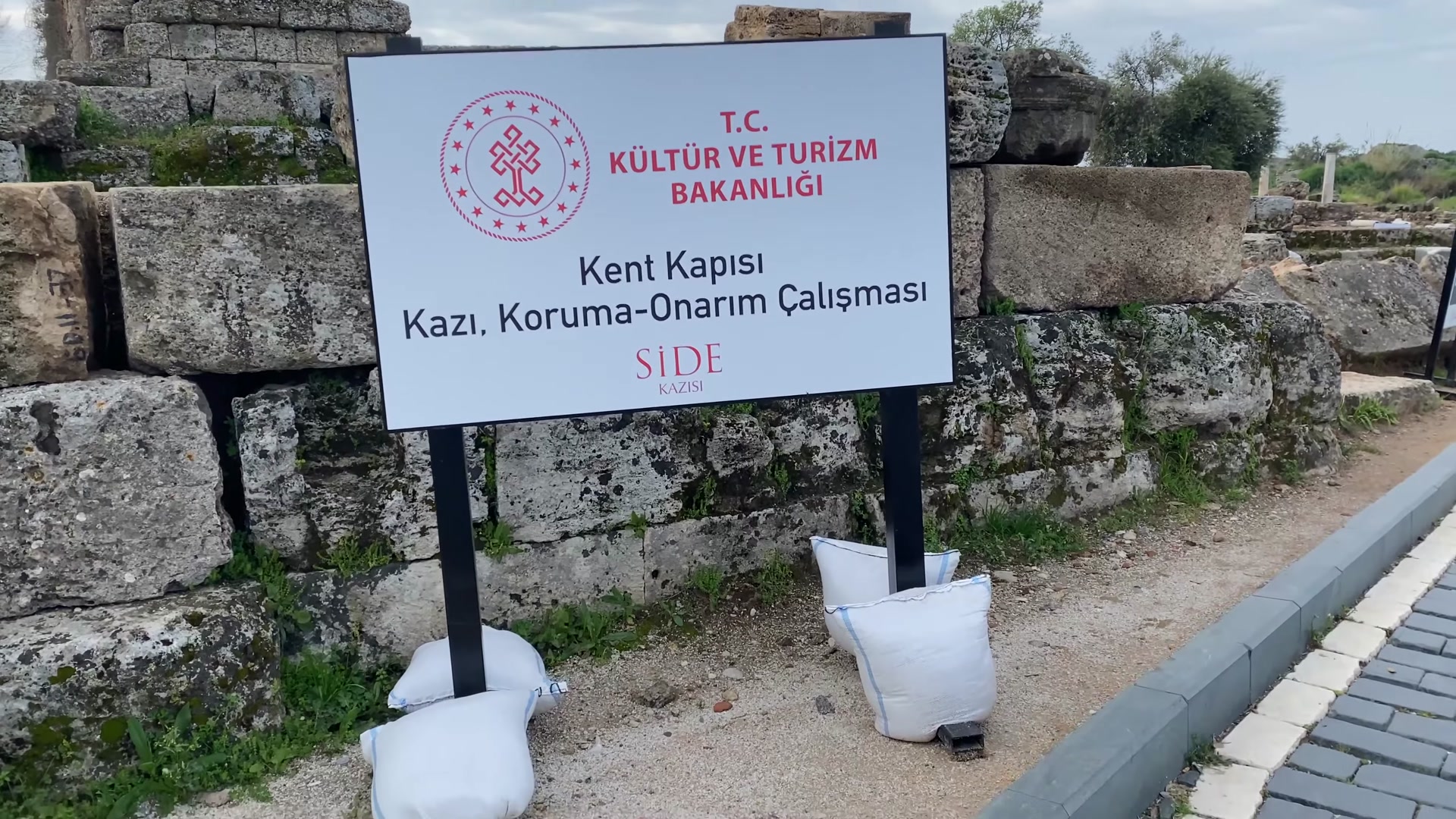
There are information boards placed throughout the area. I counted around twenty, most pinned onto sandbags. Many of them show miniature reconstructions of how the buildings looked two thousand years ago, which made it easier for me to imagine the Roman era.

At one point I caught myself standing next to a board, completely lost in thought. I couldn’t help wondering who might have walked these streets so many centuries ago. In moments like these, the stones seem to transform into silent witnesses of history.
We came across the remains of a grand Roman fountain, once five meters tall and thirty-five meters wide. This multi-level pool was originally decorated with marble and statues. Today only two of its three levels are still standing and no water flows, but it isn’t hard to picture its former beauty if you use a bit of imagination.

After seeing the fountain, we walked along the colonnaded street toward the city center or sometimes wandered off along quieter, green pathways. There we discovered aqueducts, small stone structures and the remains of ancient city walls that once surrounded Side on both land and sea sides.


One of the most impressive landmarks is the massive amphitheater. It’s in remarkable condition, which is not surprising since amphitheaters tend to survive well over time. There are five similar structures in Turkey. This one, built in the second century ad, could hold up to sixteen thousand spectators. The amphitheater had two levels. We explored the lower one since only part of the upper section remains and it’s closed to visitors.

As I sat on the stone steps looking around, I imagined being in the middle of a gladiator fight. It may sound like a cliché, but that atmosphere can genuinely take you back to Roman times.

I think the amphitheater is ideal for a short visit of about twenty minutes, especially in spring when there are fewer tourists. The entrance fee was around four and a half euros. If you also want to visit the archaeology museum, you’ll need to pay an additional two euros. I didn’t go inside the museum, but it might be worth considering.
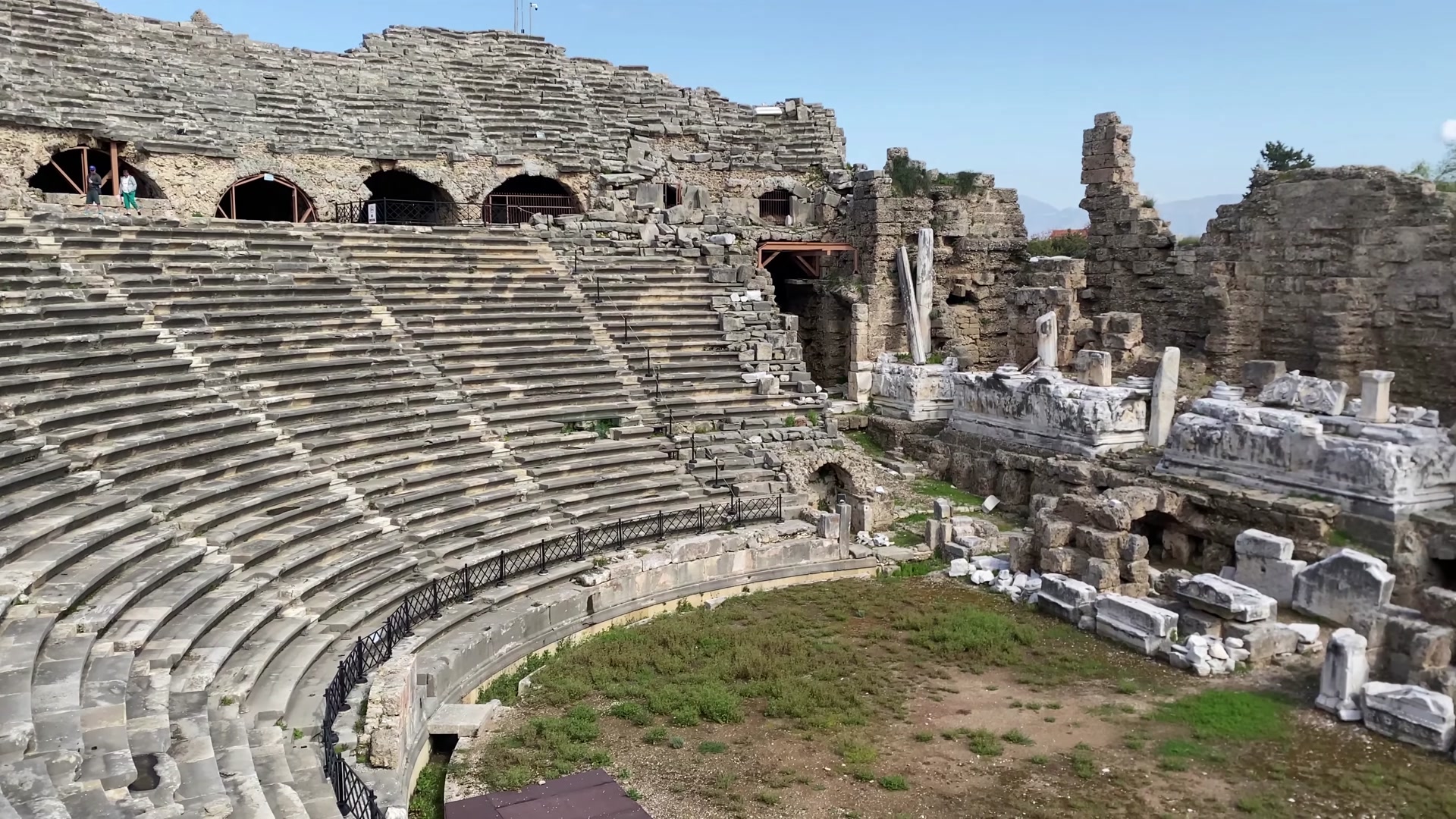
Some parts of the amphitheater are open to visitors free of charge. You can walk under the entrance arches, explore the inner structure and even step into the arena. Gladiator fights were held here and they even staged naval battles by flooding the arena with water.


Right in front of the amphitheater are the remains of the Temple of Fortuna, the Roman goddess. The temple once had a unique conical roof and a facade decorated with zodiac symbols. Its appearance became known thanks to an ancient coin depicting both the agora square and the temple itself. After the fall of Rome, the temple fell into oblivion and unfortunately, only a part of it has survived.
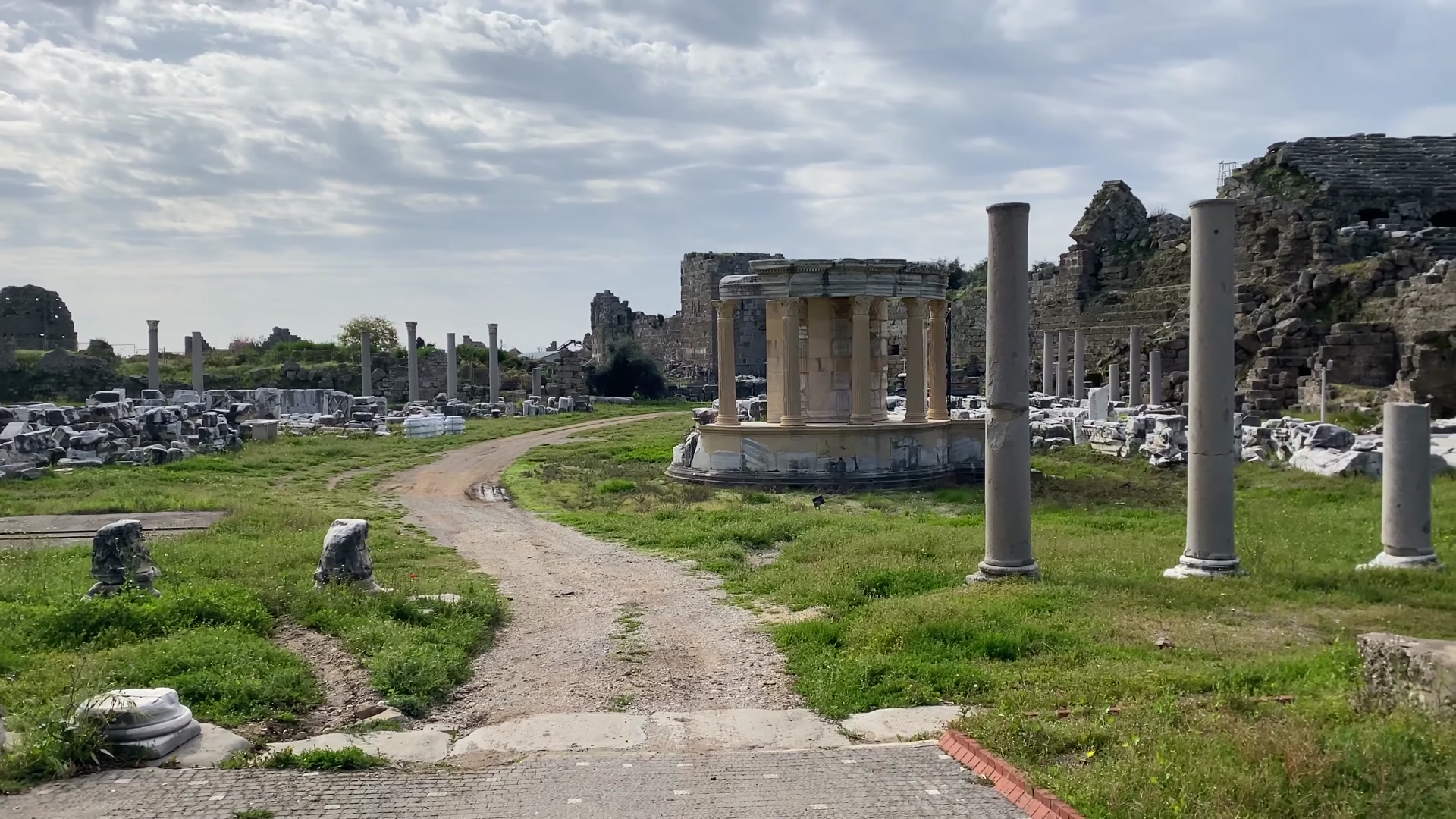

Another fascinating landmark is Side’s main gate, built in the first century ad. Six meters tall, this majestic entrance was a sign of the city’s significance within the Roman Empire. In the fourth century, it was partly sealed with stones for defensive reasons. Even in ruins, its size and grandeur are still impressive.


After passing through the gate, we returned to the colonnaded street, which is now the liveliest area of the city. Here, modern houses, shops, restaurants and ancient ruins stand side by side. To be honest, this mix felt a bit odd to me. At times, it seems the archaeological treasures are overshadowed by modern construction. Seeing a parking lot right next to ancient columns or modern buildings rising over ancient foundations was somewhat disappointing.


Probably the most photographed place in Side is the Temple of Apollo. Built in the second century ad, it stood on a prime location. The sheer size of the remaining columns gives a clear idea of how grand the temple once was. Unfortunately, with the spread of Christianity, the temple was abandoned and later torn down to make way for a church.

While searching for the perfect angle for a photo, I noticed a group of tourists changing poses again and again beside the same column. I guess this spot has become a must for social media photos.

What stayed with me most after visiting Side is how little of its enormous potential seems to be used. The place is packed with historical treasures,temples, churches, columns, amphitheaters... yet it’s hard to fully sense the charm of ancient times.

I believe the ongoing construction work and city traffic play a major role in this. It’s not only construction vehicles; regular cars and motorbikes also drive through the area. Many columns lie scattered around. You’re surrounded by a two-thousand-year-old heritage, yet it doesn’t always feel that way.

Perhaps the fact that entrance is free affects this situation. If there were an entrance fee, more resources might be dedicated to preservation and better presentation of the site.

On the positive side, all new buildings follow a similar architectural style with white walls, wooden details and sometimes accents of green, pink, or blue. There are no tall glass towers or massive hotels, which is definitely a plus.
Another charming aspect is that there are no asphalt roads on the peninsula. Instead, there are stone-paved streets or gravel paths, which makes walking around much more pleasant.
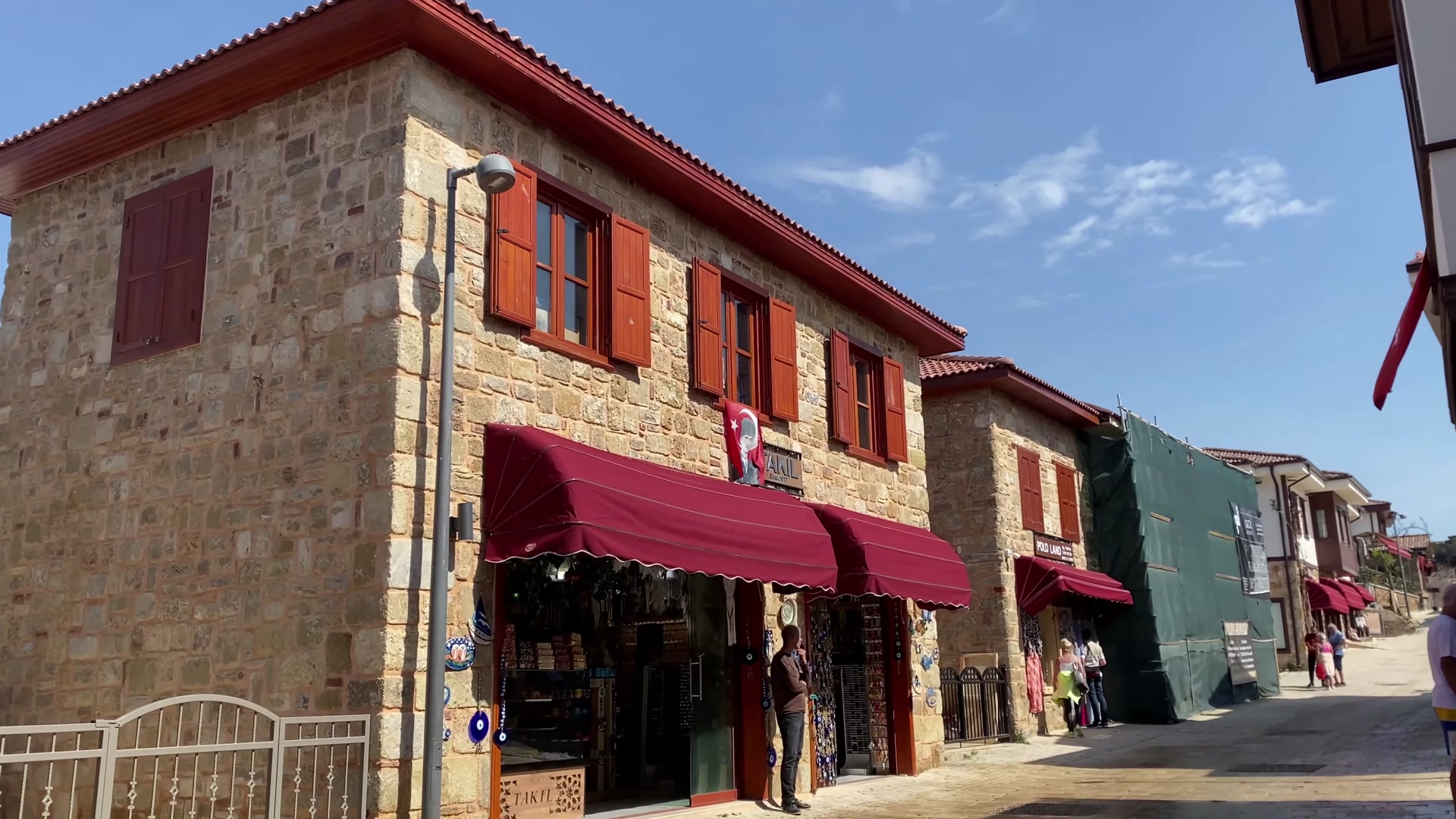
Still, I couldn’t help but feel disappointed when I saw plastic bottles discarded on the ground in a few corners. I really wish people would show a bit more care.
I think Side could unlock a lot more of its potential within the next ten to fifteen years. Visitors might leave with a far deeper impression than they do now. After all, it’s a seaside town with a stunning and captivating coastline.

So, if you are spending your holiday near Antalya or Alanya and have the chance to visit Side, I strongly recommend going. Set aside three or four hours to explore the amphitheater, walk along the colonnaded streets and enjoy the ancient atmosphere. In my opinion, it’s an experience worth having.
Of course, not everyone may agree with my views. In fact, some people might find Side appealing exactly because of its blend of restaurants, cafes, shops and ancient ruins all mixed together. Perhaps that’s what makes the place unique. I’d really like to hear your thoughts on this.
You can check out this post and your own profile on the map. Be part of the Worldmappin Community and join our Discord Channel to get in touch with other travelers, ask questions or just be updated on our latest features.
Beautiful place full of very entertaining atmosphere the victory in the place is really amazing as well as the fountain ❤️🙏
So glad you enjoyed reading about Side! It really is a special place
Thanks so much for your kind words! 😊
Hiya, @glecerioberto here, just swinging by to let you know that this post made it into our Honorable Mentions in Travel Digest #2629.
Your post has been manually curated by the @worldmappin team. If you like what we're doing, please drop by to check out all the rest of today's great posts and consider supporting other authors like yourself and us so we can keep the project going!
Become part of our travel community:
Thanks so much 😍
You are very welcome @ellie-mai! it was well deserved. ☀️
We are already looking forward to reading more about your adventures!
The arena looks perfect its really interisting to visit like this historical ancient places and its a must visit place.
You're absolutely right. The arena in Side is just incredible
So glad you found it interesting
These are vestiges of a millennia-old past that are still present today with these architectural features.
Totally agree! It's incredible how these millennia-old architectural wonders are still standing strong today. Thanks for sharing your thoughts 🙏
https://www.reddit.com/r/urbanexploration/comments/1mfw6sy/ancient_city_of_side_turkey/
This post has been shared on Reddit by @yale95reyra through the HivePosh initiative.